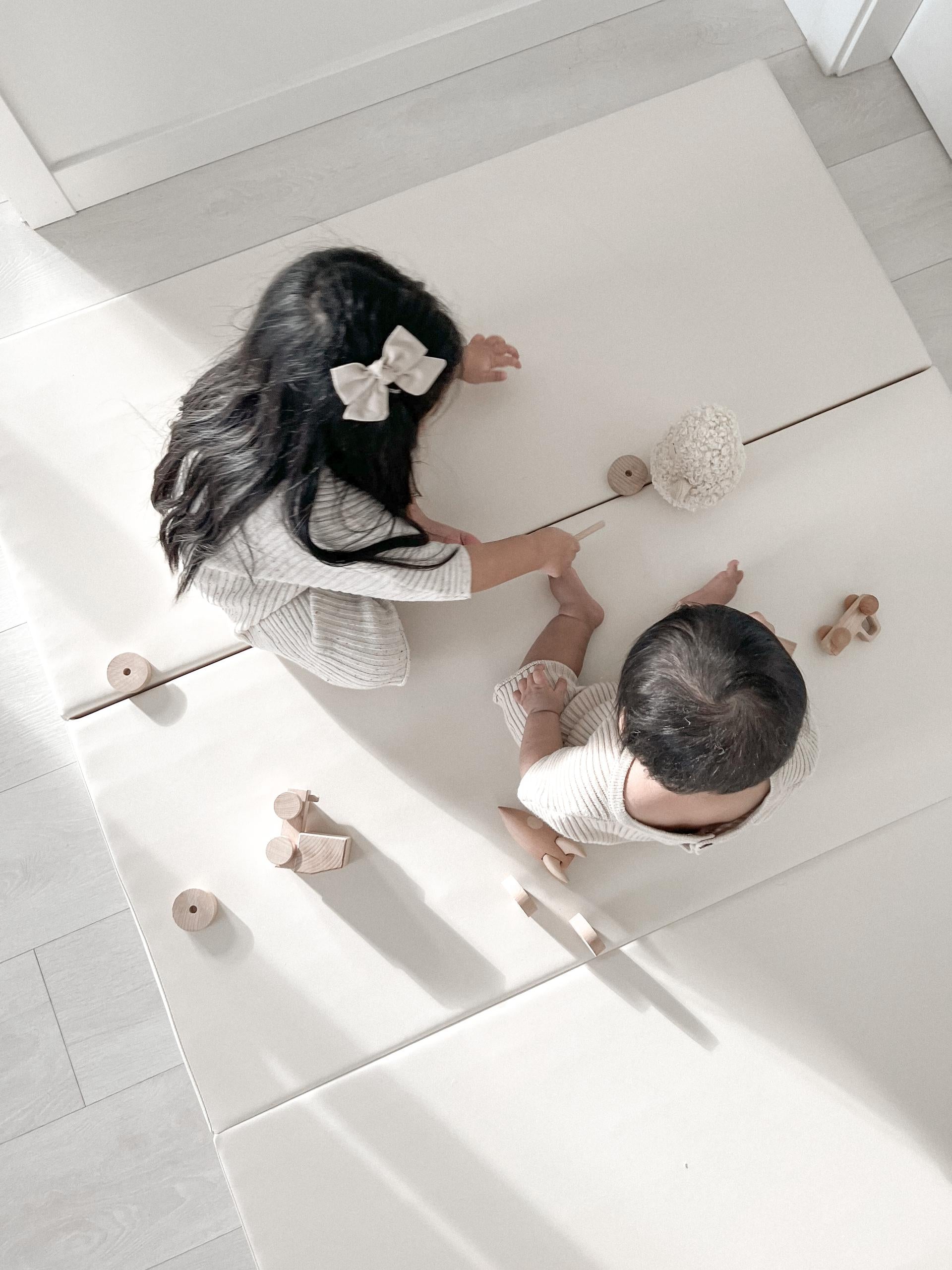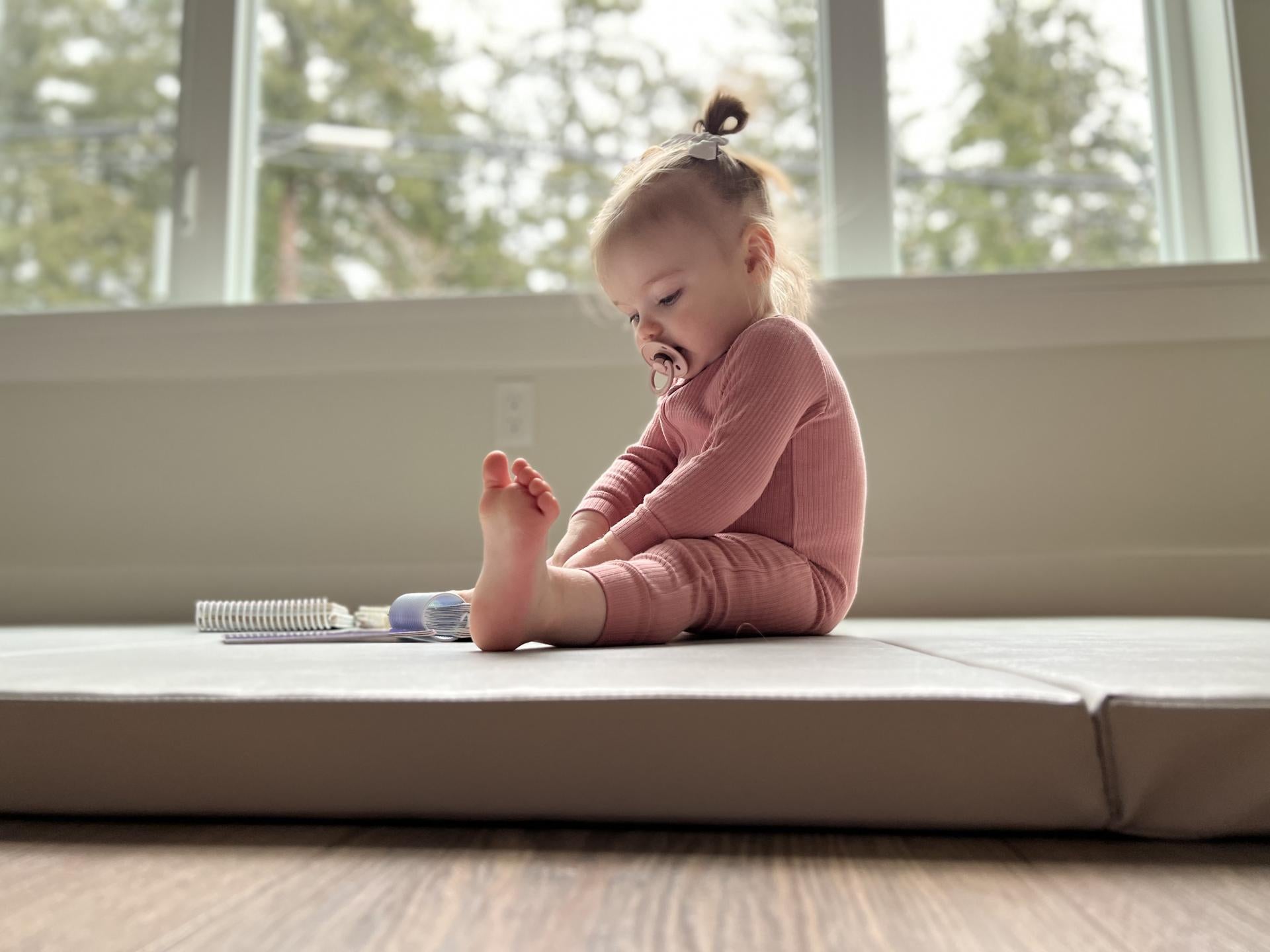Article: The Stages of Babies Sitting: When Do Babies Start Sitting Up?

The Stages of Babies Sitting: When Do Babies Start Sitting Up?
Parenthood is a series of special moments and important firsts, from the first time they grab onto your finger to their first words. Among these milestones and newborn stages is the ability to sit up independently. This significant step in their development is one that parents wait for with anticipation and excitement because it sets the stage for their little ones to stand and walk not long after.
As parents eagerly await each developmental stage, the ability to sit marks a significant moment in a baby's journey towards mobility and their ability to interact with their surroundings. We’re here to help families understand the intricacies and nuances of this milestone and its overall importance in the context of your little one’s growth.
Why is Sitting Important for Babies?
When babies start sitting up, it signifies an important developmental milestone. Beyond the great photo opportunities it provides parents, sitting up plays a key role in strengthening their core muscles and developing essential motor skills.
This part of their development encourages independence and sets the stage for the milestones that will follow, including crawling and walking. In addition to this physical achievement, the stages of sitting up for a baby promote social and cognitive growth, allowing them to interact with their surroundings in a new and exciting way.
The Baby Sitting Timeline
Every milestone in your little one’s life comes with its own timeline, whether you’re keeping track of their baby teething symptoms or determining if baby-led weaning is right for them. Understanding the stages of your baby sitting up can help you prepare for what’s to come.
Newborn Stage
To answer the question of when do babies start sitting up, we first have to touch on the first stage of their development — the newborn stage. During this stage, babies are at their most delicate, and their movements are limited. This is where tummy time on their non-toxic playmat becomes crucial. Newborns need a safe, comfortable space to develop their neck strength and motor skills.

3-4 Months: Head Control
At the three-to-four-month stage, parents should see signs of head control during tummy time. This stage typically means showing increased neck strength and should come just before your baby starts sitting up. This stage sets the scene for more complex movements.
4-6 Months: Supported Sitting
Between ages four and six months, your little one’s ability to sit using supported tools is a major step in their ability to sit up independently. With pillows or cushions, babies can sit in an upright position, practicing their balance skills, and actively participate in this progress with their parents.
6-8 Months: Independent Sitting
Typically, babies start sitting up during this stage. Your child is learning balance and muscle development, and parents will often be able to witness their little one’s transformation from basic attempts to confident, unassisted sitting.
8-10 Months: Transition to Crawling
By 8-10 months, sitting plays an important role in the transition to crawling. Babies will use their newly developed sitting skills to explore what’s around them, which is a key step toward developing their mobility. This stage brings an important phase of discovery that parents can observe in real-time.
10-12 Months: Preparing for Standing
As babies approach their one-year milestone, sitting up becomes a stepping stone for the next phase—standing. Using furniture to help them balance and pull themselves up showcases their developing muscles and sets the scene for their toddler years when they learn to walk, run, and explore their surroundings freely.

Signs of Readiness
Being able to spot when your little one is ready to sit up can help you act as their support system. In many cases, you’ll likely see your child push themselves up while lying on their tummy. If you sense they’re ready to try sitting up, you can position them using pillows to support them for short periods of time.
The ability of a 6-month-old to start sitting up on their own is also a good indicator that it may be time to introduce them to solid foods, another important milestone in their development.
Tips for Encouraging Sitting
Encouraging your baby to start sitting up means creating a supportive environment within their foldable wooden playpen or current play space. Start with tummy time, which helps build neck and upper body strength.
Propping them up with pillows or cushions will help them transition from supported to independent sitting. Additionally, introducing age-appropriate toys and activities, including learning walkers and stacking rings, can help make the experience more inviting and stimulating for your little one.

Common Challenges
While the road to those baby sitting positions is exciting and filled with anticipation, parents may experience some common challenges. Some babies may display signs of hesitation or discomfort during tummy time, which can impact their ability to develop those key muscles they need to begin sitting up — and in some cases, some babies just reach these milestones later than average.
What’s important to remember is that each child’s development is unique, and patience is key. Addressing these challenges with care and thoughtfulness, introducing engaging activities, and creating a positive environment will help ensure your little one progresses at their pace and receives the support they need during this time.
Celebrating Milestones
Every milestone your little one reaches is one that should be celebrated, from the first time they laugh to their first steps and everything in between. When it comes to first year baby development, including that precious rolling over milestone and the first time they learn to sit up on their own, we encourage parents and caregivers to capture those moments so that they’ll always be able to look back on them as their little one grows up.
At Wunderkids, we’re all about helping families share special moments together. Our line of play pens for babies and toddler foam climbing blocks gives babies and infants a safe space to learn and grow. As they reach these key milestones and developmental stages, parents can feel at ease knowing they’re learning on plush foam and non-toxic vegan leather surfaces — making sitting up, crawling, and walking a breeze


